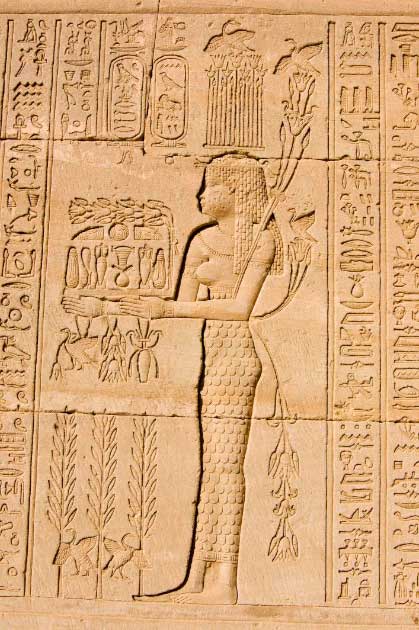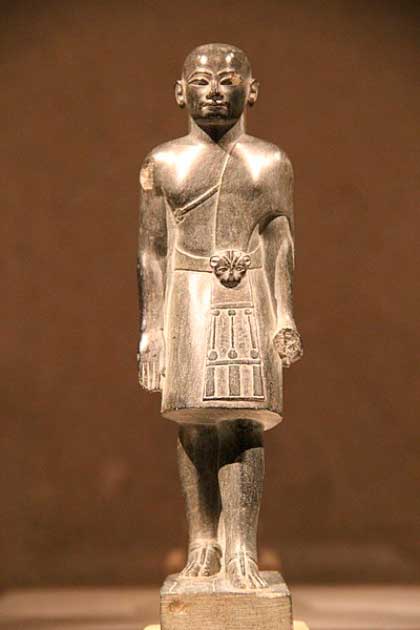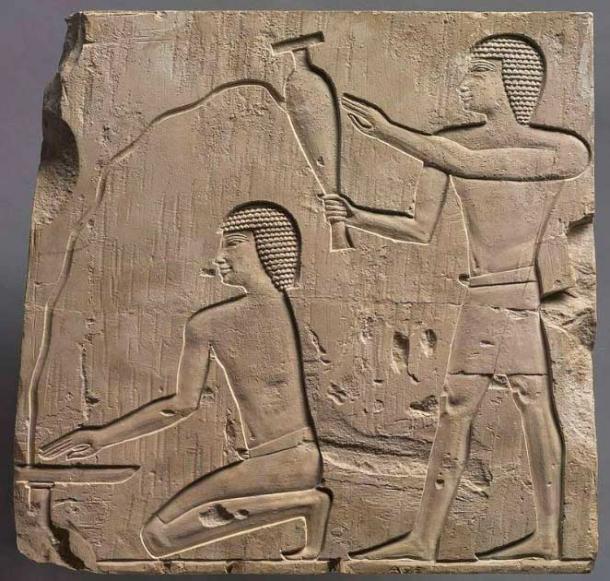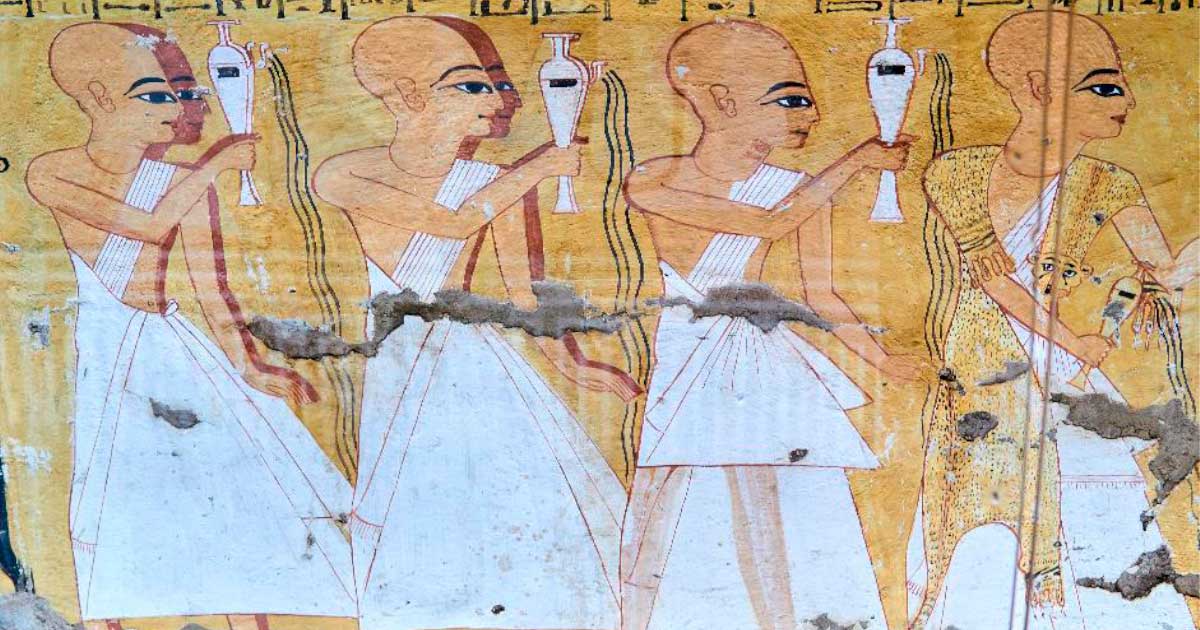A Day in the Life of an Ancient Egyptian Priest
We can learn a lot about a civilization from its dominant religion. Ancient Egypt is a good example. The religion of ancient Egypt had a far-reaching effect on every aspect of daily life. If you want to learn more about a religion where better to start than its priesthood? Ancient Egyptian priests lived a life of duty, solely devoted to their gods.
The Basics of Being an Ancient Egyptian Priest
In ancient Egypt, a priest's only duty was to care for the god of their temple. Unlike the priests of most other religions, they did not preach, interpret scripture, conduct a weekly service, or attempt to convert members of other religions.
Both men and women could join the clergy. In doing so they received the same pay and carried out the same duties. Women tended to serve the female deities and men the male, but this was not a hard and fast rule. For example, Serket’s worshippers were physicians who were both male and female.

Ancient Egyptian priestess for the god Hapi. (BasPhoto / Adobe Stock)
We know that the priesthood had already been established by the Early Dynastic Period (3150-2613 BC) and underwent rapid development during the Old Kingdom (2613-2181 BC). The priests of Egypt became immensely powerful. Whilst their role was supposed to be in maintaining religious beliefs and traditions, as they amassed great wealth and political power they became an important check on the power of the pharaohs.
- Mathematics of the Pharaohs: The Rhind Papyrus and Ancient Egyptian Math
- Italian Researchers CT Scan Egyptian Priest Mummy
Different Types of Priests
The Egyptian priesthood had a hierarchy. What duties they performed depended on where they were in this hierarchy. The higher they were, the more glamorous the duties, the lower they were, the more grunt work they did.
At the top of the totem pole was the high priest or hem-nejer-tepi. The high priest was appointed by Egypt’s ruler. They were thought to be mediators between mere mortals and their gods. The position held a great deal of religious but also political power.

An ancient Egyptian priest statue in the Egyptian Gallery, Neues Museum, Berlin, Germany. (CC0)
The next rank of ancient Egyptian priests was the lector priest or hery-heb/ cherished. It was their job to write down the religious texts, teach the other clergy, and recite the heka (the authoritative utterance) at temples and during festivals. In a way, they were similar to monks. Whilst all other parts of the priesthood featured men and women, there are no historical references to female lectors. It is thought that the position may have been hereditary, passed from father to son.
At the bottom of the hierarchy were the wab priests. They were responsible for the mundane but important day-to-day running of the temple. Need something fixed? Call a wab. Need help setting up a festival? Call a wab.
In between these extremes sat many different types of priests. Anyone who acted in service to the gods in any way was a priest of some kind. There is no definitive list of the different types of ancient Egyptian priests, so varied were their roles. However, we do have a record of several types of mid-level priests - ranging from the hour to the sem.
The hour priests were astronomers responsible for the calendar and choosing which days were lucky /unlucky. They also interpreted omens and dreams. Then there were doctor priests in the guise of swnw (for medical problems) and sau (for magical/ spiritual problems).
Sem priests conducted funeral services and were responsible for mortuary rituals. It was they who mummified the dead whilst reciting spells. The sem were highly regarded as they could guarantee the deceased access to eternal life through their incantations. One slip up by the sem and the deceased’s soul was out of luck.

Ancient Egyptian priests performing funerary rites. (Public Domain)
The Day-to-Day Life of an Ancient Egyptian Priest
As there were so many different types of priests, each with their own duties it is difficult to sum up “the life of an Egyptian” priest. The day to life of a lector was very different from that of a wab but there were some similarities.
Apart from the high priest, most priests were only part-time. The priesthood was divided into “watches” and only served for one month in every four. The rest of the time they lived their normal lives out in the community, often working as mid-level bureaucrats. Whilst serving they lived within their god’s temple complex.
All priests were expected to be ritually pure. As the Egyptians were obsessed with hygiene, ritual purity came down to two main things. Firstly, priests were expected to keep their entire bodies clean-shaven. This went as far as their eyebrows and eyelashes. Every third day they underwent hair removal procedures to keep their bodies as smooth as possible. Secondly, they were expected to bathe several times throughout the day to remain as clean and pure as possible.
Between baths and shavings, the priests were busy with various rituals throughout the day. Which rituals largely depended on which god the priest followed and where they were in the priesthood hierarchy. Needless to say, the priests were kept busy.
- Sem Priests of Ancient Egypt: Their Role and Impact in Funerary Contexts—Part I
- Top 15 Interesting Facts About Ancient Egypt That You May Not Know
It is also believed that Egyptian priests went through some kind of initiation ritual to cleanse themselves before joining the priesthood. Whilst historical records are spotty at best it is thought that for men this may have included circumcision. It is therefore likely the Egyptians, like certain other religions, associated the foreskin with poor hygiene.

The famous circumcision scene from the Tomb of Ankhmahor. (Sailingstone / Adobe Stock)
Responsible to the Gods
Egyptian priests were responsible to the gods, not the Egyptian people. There were no weekly services where people would come to the temple to worship and hear a priest speak. The priests were not responsible for teaching the people about their gods. Normal citizens of Egypt were expected to do that themselves. In ancient Egypt, religion was largely a personal, private affair, and the roles of the ancient Egyptian priests highlights this.
In the end, this may have been the religion's undoing. Ancient Greek religion was eventually adopted by the Romans. When the Romans adopted Christianity, certain elements of the old Greek religion followed. Indeed, ancient Greece’s effect on Christian scripture can be seen well into the medieval age and beyond. The same cannot really be said for ancient Egypt, its private approach to religion was too unique. When the Egyptian empire fell, its religion fell too.
Top image: A mural from the tomb Inkherkhau (TT359) on the West Bank of Nile - Thebes, Luxor, depicting a funerary procession with ancient Egyptian priests performing libations, the first one wearing leopard skin. Source: Svetlaili /Adobe Stock
References
Mark. J. 2017. Clergy, Priests, and Priestesses in Ancient Egypt. World History Encyclopedia. Available at: https://www.worldhistory.org/article/1026/clergy-priests--priestesses-in-ancient-egypt/
Parsons. M. Priests in Ancient Egypt. Tour Egypt. Available at: http://www.touregypt.net/featurestories/priests.htm
Garland. R. 2020. Religious Order of Ancient Egypt. Wondrium. Available at: https://www.wondriumdaily.com/religious-order-of-ancient-egypt/
Shaw. I. 2000. The Oxford History of Ancient Egypt. Oxford University Press.


















Comments
It's worth noting that the Ancient Egyptians exerted influence on their later Greek counterparts. Deities within the Egyptian pantheon such as Isis, Osiris, Horus, and Thoth exhibit similarities with the Greek gods Demeter, Dionysus, Apollo, and Hermes. Additionally, the Romans outright adopted the worship of Isis, exemplifying a significant instance of cultural exchange and religious syncretism in antiquity. However, the religious practices of Ancient Egypt lacked a missionary fervor. Their primary focus was on maintaining a sense of balance within the sacred Two Lands of Upper and Lower Egypt, as embodied by the goddess Maat, and the life giving flooding of the river Nile with its spiritual, cultural, and economic significance.
“Past Future Journey Nile” doc: https://youtu.be/fGvOrmqcga4
Mike Mannetta